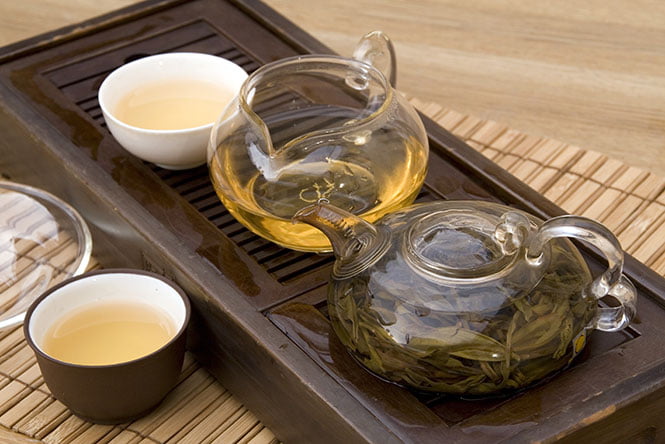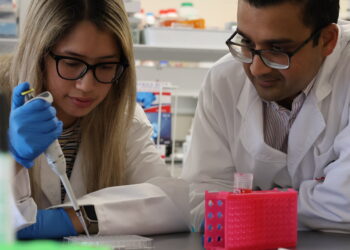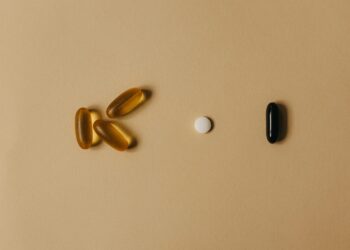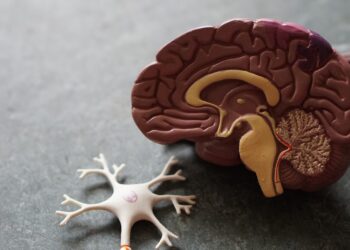Did you know that green tea comes from the same plant as black tea? The plant name is Camellia sinensis. In Chinese it literally means ‘tea flower’. This beautiful evergreen shrub also yields white and yellow teas. Once the tealeaves are plucked they undergo a variety of different preparations such as steaming, fermenting and oxidizing, to name a few, in order to yield the different tea colours.
Green tea’s medicinal benefits have been known since ancient times. Used as a panacea to treat everything from headaches to depression. Drinking green tea, a simple daily ritual, offers health benefits beyond any modern day superfood and these are the reasons why? Green Tea has been extensively studied to act as a:
1. Powerful antioxidant and anti-inflammatory. Studies have shown that Green tea can reduce oxidative stress and inflammation caused by pathogenic infections. Similar results have been seen with flu-induced inflammation. These powerful antioxidants have also been shown to protect against a variety of cancers.
2. a. Antibacterial by inhibiting bacterial growth and binding. Bacteria studied include E.coli, Streptococcus, Enterococcus, Clostridium, Helicobacter pylori and Salmonella.
b. Antifungal by inhibiting the growth of fungus such as Candida.
c. Antiviral by inhibiting viral entry, binding and growth. Viruses studied include Epstein Barr, Influenza, Herpes simplex and Hepatitis B.
3. Studies have shown it can reduce the severity and symptoms of the flu virus as well as reduce dental caries and cavities.
4. Boost metabolic rate, fat burning and energy hence why it is found in many fat burning health supplements.
5. Anti anxiety. One of green tea’s active constituents, L-theanine, increases the activity of the inhibitory neurotransmitter GABA, which has anti-anxiety effects.
6. Improve mental performance and cognitive function. Think clearly, have better memory recall and focus with green tea.
7 Lower the risk of modern day illnesses such as:
a. Type 2 diabetes. Studies show that green tea can improve insulin sensitivity and reduce blood sugar levels.
b. Cardiovascular disease. Green tea has been shown to lower total and LDL cholesterol, as well as protect the LDL particles from oxidation which contributes to plaque in the arteries.
c. Alzheimer’s and Parkinson’s disease. The catechins found in green tea have various protective effects on neurons in the brains.
My tips on how to purchase and drink the best green tea?
It can be confusing. There are so many varieties of green tea. Green tea may be categorized by its country of origin such as Chinese or Japanese green tea, the province or region is has been grown in, how it is grown – in shade or sun, the part of the leaf, bud, or twig used or whether it is sold or served as a powdered, whole or broken leaf. Nonetheless, the following tips will ensure that you choose the best from all varieties.
– Always buy organic. Non-organic tea grown in other countries is irradiated. Concerns about irradiation are that natural health constituents and vitamins and enzymes are depleted when tea is irradiated. There are some chemical free green tea plantations. Seek expert advice from your local tea association.
– Choose whole leaf or broken leaf but not the dust also known as fannings normally found in less expensive teabags. Choose teabags made from biodegradable plant based instead of nylon or bleached paper.
– Make tea from filtered or Spring water. Due to the green tea plant’s high sensitivity and absorption of environmental pollutants such as fluoride and aluminum, choosing organic (less chemical pollutants) and making your green tea in filtered water will reduce the amount of these heavy metals. Once study cites that the addition of lemon juice reduced the heavy metals.
– Oxalates are found in tea as well as other foods such as spinach, chocolate and rhubarb (though cooking inactivates the oxalates in these foods). In the body, oxalates bind to calcium and iron and are then excreted in urine as minute crystals. Avoid drinking green tea with iron and calcium rich foods as they will deplete these vital nutrients in your body.
– Generally, green tea is consumed as is, but if you desire a little sweetness, avoid artificial sweeteners and sugar and choose a little amount of green leaf stevia powder.
– Avoid decaffeinated green tea. Decaffeination is the act of removing caffeine from coffee beans, cocoa, tealeaves and other caffeine-containing materials. Despite removal of most caffeine, many decaffeinated drinks still have around 1–2% of the original caffeine remaining in them, and research has found that certain decaffeinated coffee drinks can contain around 20% of the original caffeine. The concerns are not so much that caffeine is left behind but the chemical solvents used to eliminate caffeine are left behind.
– Enjoy 3 cups of quality green tea everyday to experience these wonderful health benefits.
Follow Anthia: Website | Facebook | Twitter





















